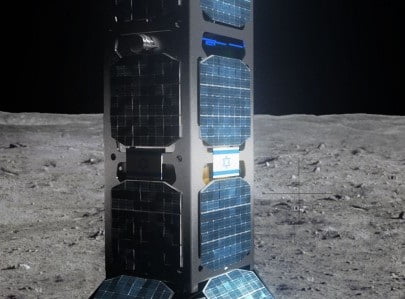[Story Update] On June 26th, the Israeli team, SpaceIL, taking part in Google’s Lunar X-Prize — an international competition that seeks cheap ways to explore space with robots — launched a rocket with the help of nearly a hundred engineers, space experts, technological and intelligence officers and soldiers. The test launch was part of the team’s effort to launch a robot on the moon, an endeavor which could earn them $20 million.
The rocket, made of PVC and equipped with small parachutes, was launched 1 kilometer into the air. The onboard sensors gathered data and images during the rocket’s flight. The purpose of the experiment was to simulate the reactions of the electronic and computer systems in the final step of the future landing. For now it seems that the sensors managed to analyze data in real time. In the next few months the Israeli Trio will do a few more practical tests.
Google Lunar X-Prize participants are given until 2015 to complete the task, which consists of building and and launching a robot on the moon, where it will need to complete a 533 meter stroll on the face of the moon and send high quality video files back to earth. The first group to complete the challenge will get 13M$. Until today, 13 groups signed in.
The Israeli team, composed of three men with various technological backgrounds, believe they can win with their coke-bottle sized rocket. The three, 30 year-old electronics and computer engineer Yariv Bash, 28 year-old Communication Systems Engineer Kfir Damari and 24 year-old NASA’s International University graduate Johnathan Vintraub, met at a military industry innovation conference.
The trio see this project as an educational opportunity: “All profits from this project will be donated to the education system, it is not a business, that’s why we are registered as an association. We give lectures in schools about the project, we want the youth to be familiar with the project” says Damari.
They believe that it is more than possible to get to moon. “The fuel calculations that will get our small spaceship landed were made 40 years ago. The largest challenge is landing it successfully on the moon and transferring video back to earth” explains Damari. The spaceship, CubeSat 3U, is designed as a 10X10X30 cube box (roughly the size of a bottle of Coke) from cheap and compressible materials as possible. Nowadays there are many CubeSats with cheap and simple hardware that circle the earth.
Jonathan Vintraub, a third of Israel’s three-man team, talked about the challenges of being a small group from a small country, competing against groups of NASA graduates trying to land their robots on the moon. “We are a nonprofit organization. Since we started we managed to gather up 83 volunteers in addition to academy experts, military officers, industrial and space experts, universities and commercial companies that cooperate with us”. The engineers donated hours of reaserch and development.
Photo courtesy spaceil
Related posts

Editors’ & Readers’ Choice: 10 Favorite NoCamels Articles

Forward Facing: What Does The Future Hold For Israeli High-Tech?

Impact Innovation: Israeli Startups That Could Shape Our Future




Facebook comments